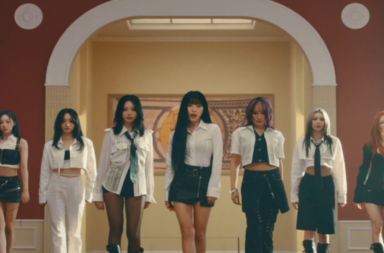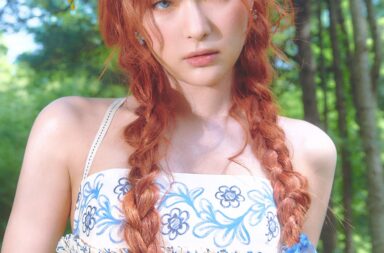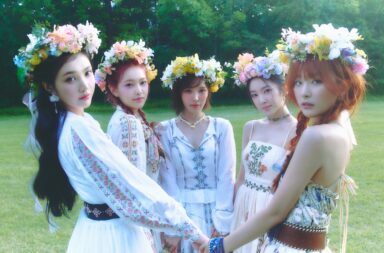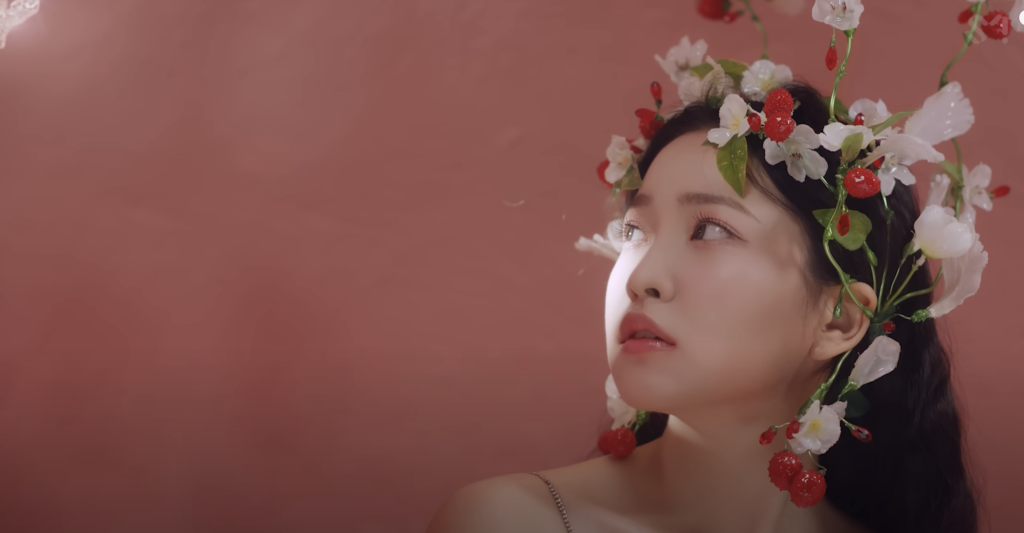
It is again time to hail the concept queens, who have returned full force following a safe, comforting comeback with “Queendom” last summer. Since their previous comeback, Reveluvs around the world were expectant of a bolder, weirder, and perhaps creepier concept that the group is known and loved for (think “Bad Boy,” “Peek-A-Boo,” and “Russian Roulette”). While occasionally leaning on general public-approved tracks such as “Power Up” or “Rookie,” Red Velvet has been a pioneer with the experimental, making it their ultimate trademark.
Now that the group has re-established its foundation post-hiatus, they were completely unafraid to surprise us with the help of the classical arts. Both a ballet theme and rich references to paintings have enhanced an already enchanting concept, enriching the styling and MV editing as well. Fans have quickly tracked down which scene hails back to which painting, which is a clever way to have us piece together — and also further expect — another storyline to unfold in due time.
However, it is worth pointing out that “Feel My Rhythm” doesn’t merely stick to the classical angle: starting from the chorus, there is a sudden juxtaposition to the modern-day, as signified by their low-rise outfits that clash against what was built up until then. While opinions may certainly differ, it is notably distinct from the rest of the concept, making the inclusion rather questionable.
But before diving in, let us first recognize the creative, dreamy interpretations the MV holds in recognition of classic art. The following gallery below identifies five instances of these interpretations, and the relevant works they represent.
A key factor seems to be that these artworks are centered on portraying women: along with love, livelihood, and everything in between. Filtered with a spring color lens, the mish-mash of these distinct pieces could possibly tell its own tale through its subtle messages. Overall, the production team has done an amazing job incorporating not only artistic editing as an extra finesse, but also including each shot so seamlessly into the flow of the MV. Including these references into the plotline of the MV (as symbolism) helps fuse the production into one whole artistic vision.
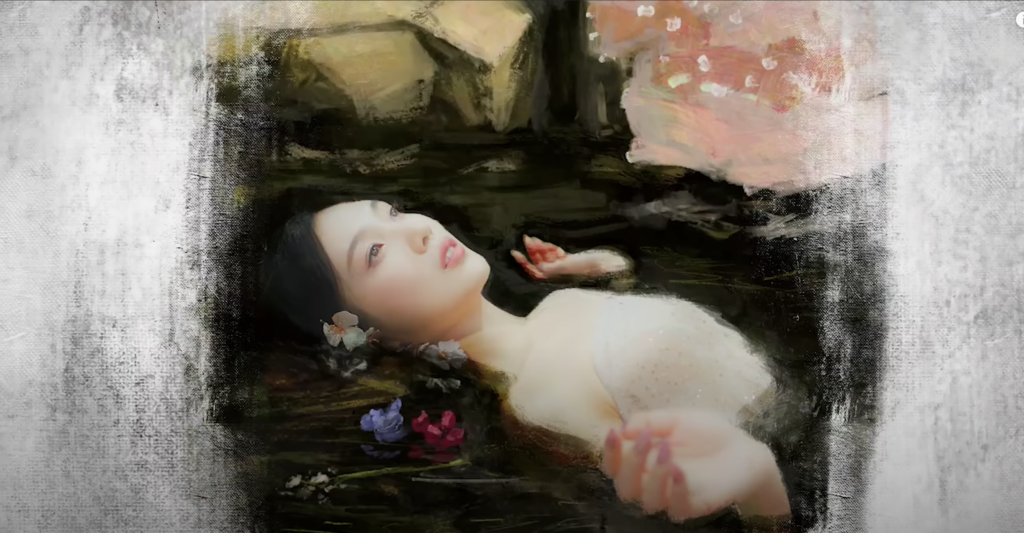
“Ophelia”: John Everett Milais 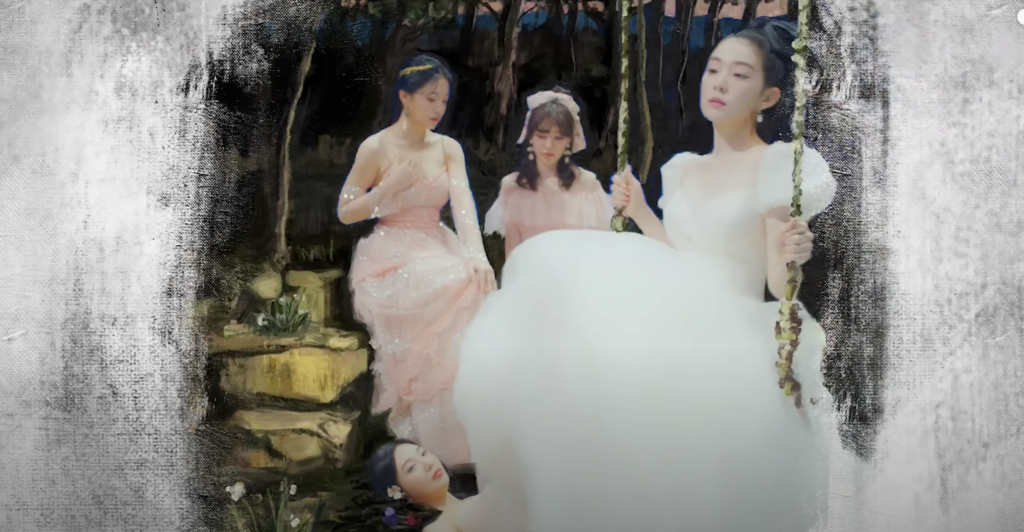
“The Swing”: Jean Honore Fragonard 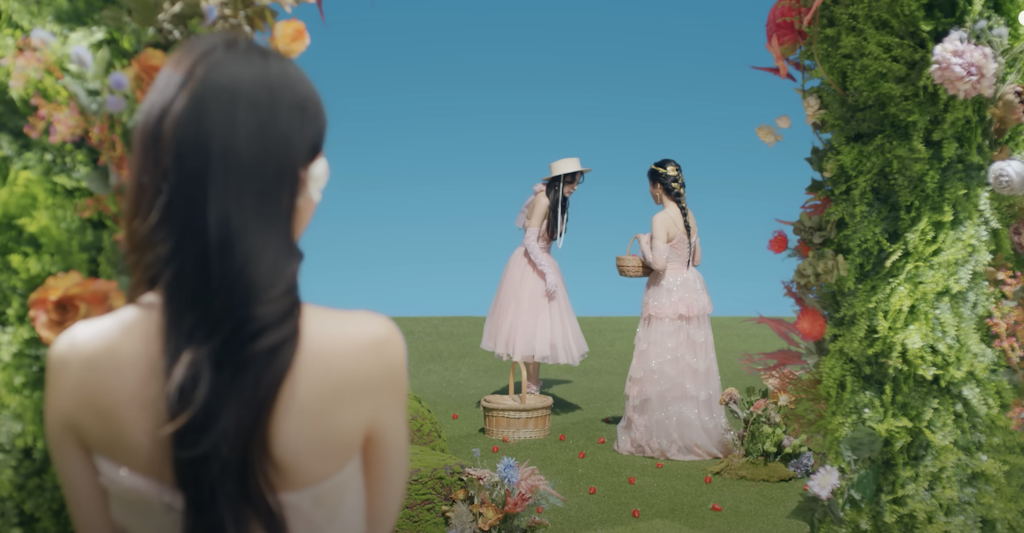
“The Gleaners”: Jean-Francois Millet 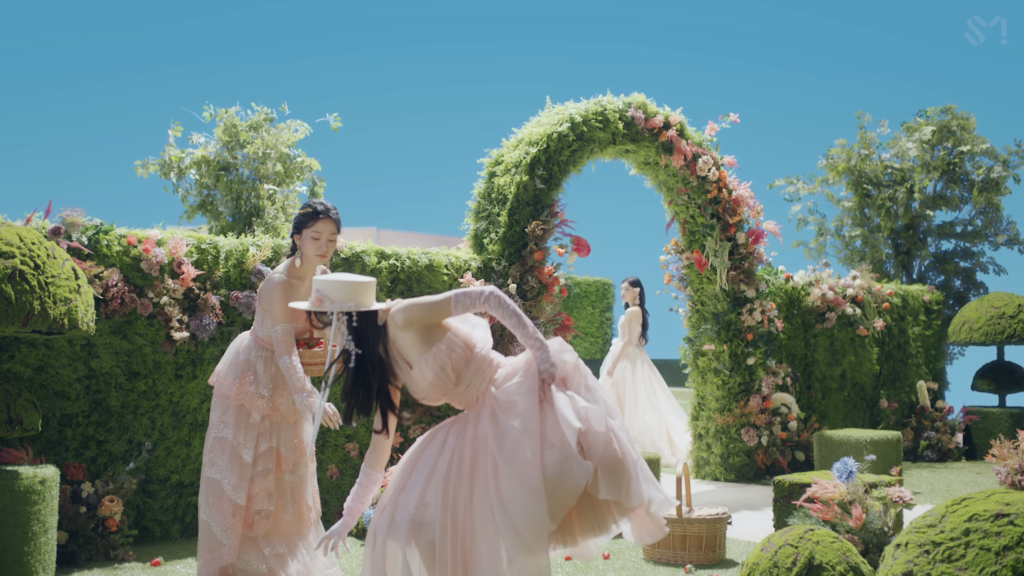
“The Gleaners”: Jean-Francois Millet 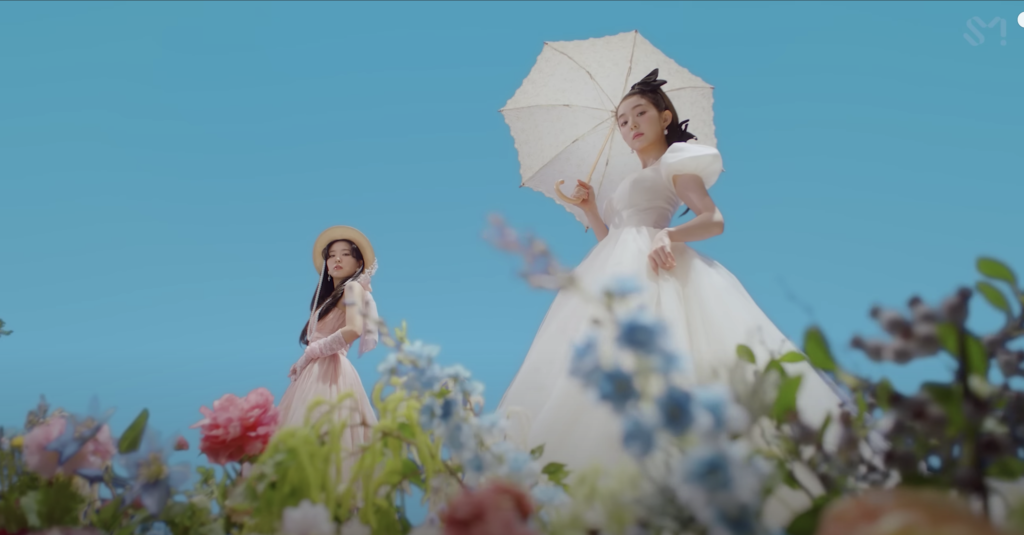
“Woman with a Parasol”: Claude Monet 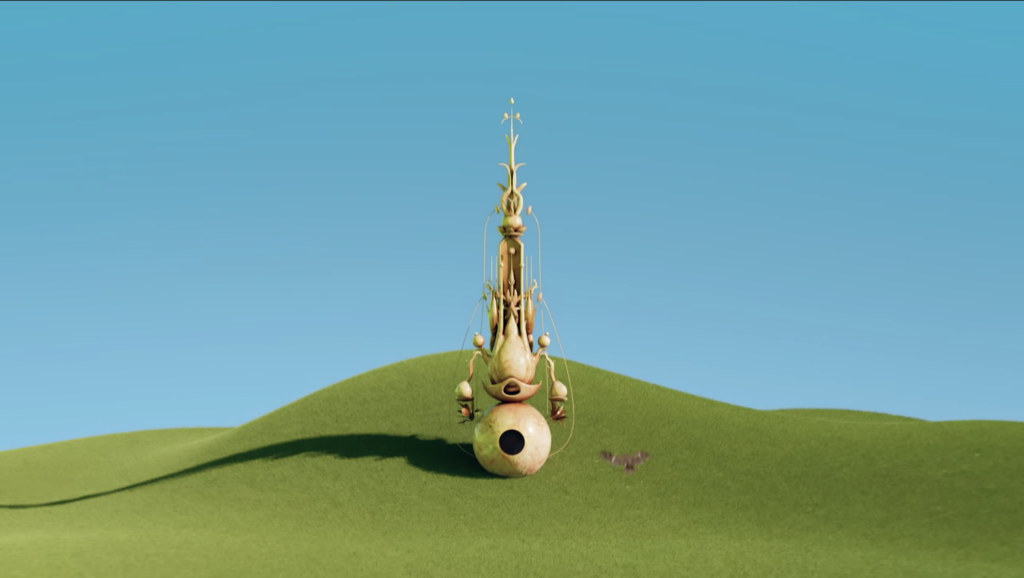
“Garden of Earthly Delights”: Hieronymus Bosch
Looking into the use of Art more closely, such references intrigue the viewer as to whether there are hidden clues regarding the members’ roles in this story. “Ophelia” refers to the infamous Hamlet character who drowns in a meadow after discovering her father’s death from her lover Hamlet. The diversity of flowers further symbolizes a loss of innocence, vain love, and more.
Meanwhile, “The Swing” depicts an action of playful and erotic pleasure, although the original intent of the painting — to highlight a court governor’s mistress — is subdued in the MV to cast a shade of irony instead; Irene, with a somber expression, swinging back and forth (on the “pendulum” of love) over Joy, who is clearly mourning and drowning from a failed love story. Wendy and Yeri also seemingly mourn Joy’s outcome, although it is not that visible with Irene swinging back and forth between doubt and faith in love.
On the other hand, Monet’s painting depicts Madame Monet and her son in a dreamy setting that goes against the artist’s stark reality: a mundane city life, rather than one spent in nature and abundant riches. This is in direct contrast to “The Gleaners,” however — a realism-era painting emphasizing the working masses of Paris who, after the French Revolution, greatly outnumbered the elite. It is noteworthy to mention here that Seulgi “walks” from one picture (Monet, with Irene) to the next (Millet, with Yeri).
If considering the timeline backward, perhaps Seulgi may have something to do with Joy lying in the meadow, after Joy catches her in the pastures? This can further imply that white dresses (worn by Irene and Joy) signify a potential upper class (also in reference to Irene holding the parasol and Ophelia, a character of the royal family).
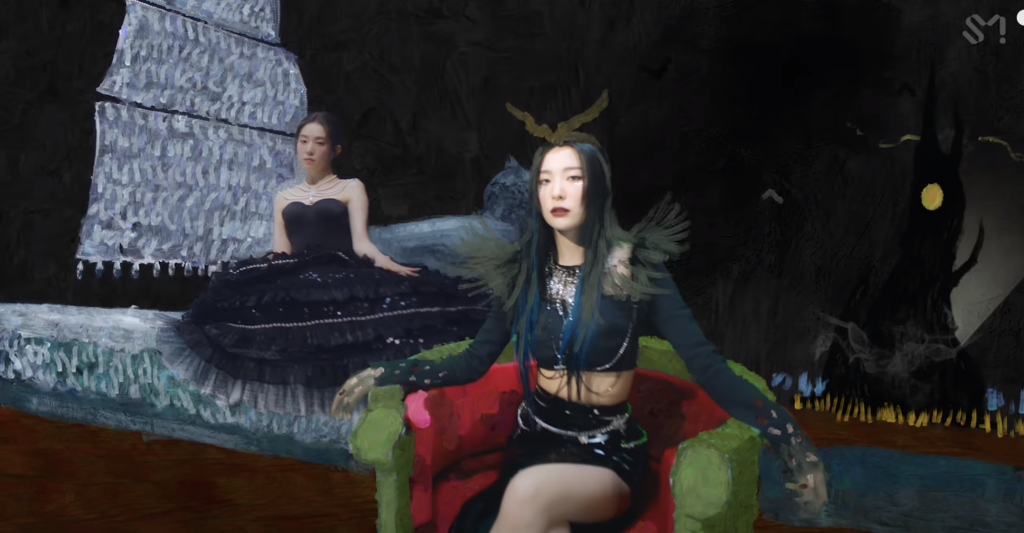
Last but not least, Bosch’s “Garden of Earthly Delights” amplifies the potential “villain” angle for Seulgi, as this painting depicts a glance at three gardens linked together: Eden, earth, and hell. The scene where Seulgi appears at the end of the MV depicts the Garden of Eden, prior to the fall of humanity: and only she appears, dressed entirely in black. These scenes coincide with how Seulgi glances elsewhere both in the beginning and ending, most likely considering other plans all the while.
Overall, whether there is a direct storyline at hand or it is open to interpretation, the artistic references certainly add complexity and depth to the MV for fans to consider.
Coinciding with the artistic references is a strong spring aesthetic that is refreshing to see for Red Velvet: a group that usually leans on summer powerhouse releases. Visually, “Feel My Rhythm” is a beautiful production that is a wonder for the eyes from start to finish. The ballerina outfits, the royal gowns, the blue sky with the green lawns — all conjure up a dreamy, aristocratic setting for Reveluvs to revel seeing the group perform in. Personally, the highlight of the MV finds itself in the garden, where most of the artistic references unfold: it’s a (potentially deceiving, but still) masterpiece that depicts a “perfect” spring day.
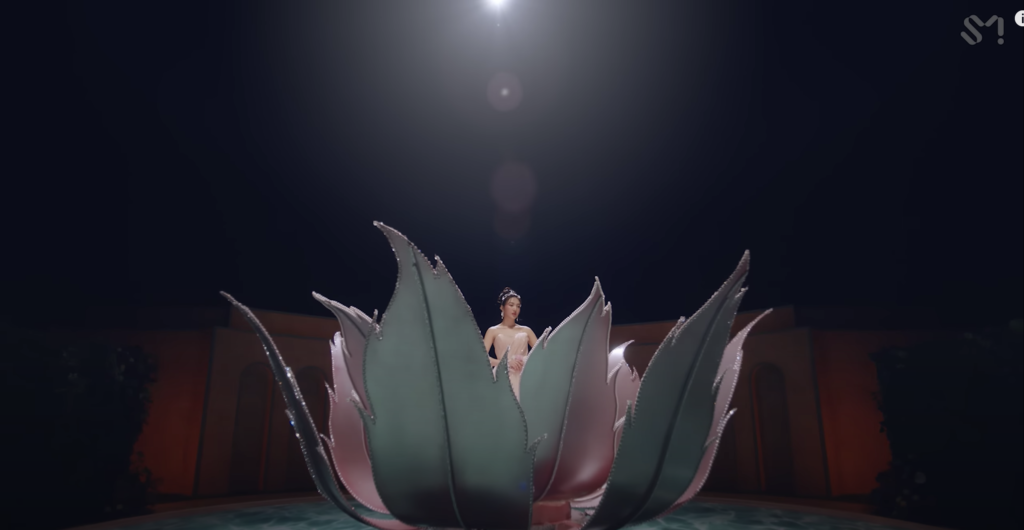
Moreover, the use of colorful, creative sets boosts the setting atmosphere, although some viewers did point out the 2% lacking portion of Wendy’s CG scene with the floating strawberry. While this scene is included for the sake of plot and artistry, perhaps it could’ve been executed in a physical set, as the remaining members did for their solo scenes in fantastical spaces. The rest of the sets, however, were reminiscent of musical sets onstage, as they were rather minimal with just the member, prop(s), and masked dancers performing in the background. Altogether, the solo sets combined with the group scenes resulted in a good balance of maximal versus minimal, maintaining our focus throughout the MV.
Last but not least, the choreography shots are even more differentiated than the profile or group shots. One could imagine they come from two different MV’s, mainly due to the outfit changes but also due to the missed opportunities. While there is nothing wrong with juxtaposing two separate aesthetics into one MV (such as the ballerina costumes vs royal gowns), the sudden appearance of pink and blue crop shirts and low-rises was a lost aim. Not only were the outfits generally unflattering (especially for Joy and Seulgi), but it didn’t seem to follow through with the original agenda. A spring-time, bubblegum pop concept had so much potential, even with a more casual, fun angle. Perhaps the girls could’ve gone with shorter floral dresses or even gone for a white tee and jeans, reminiscent of SNSD’s infamous “Gee” teaser photos. Overall, while their stylists killed it with the dresses, the choreographic outfits seemed to be a miss.
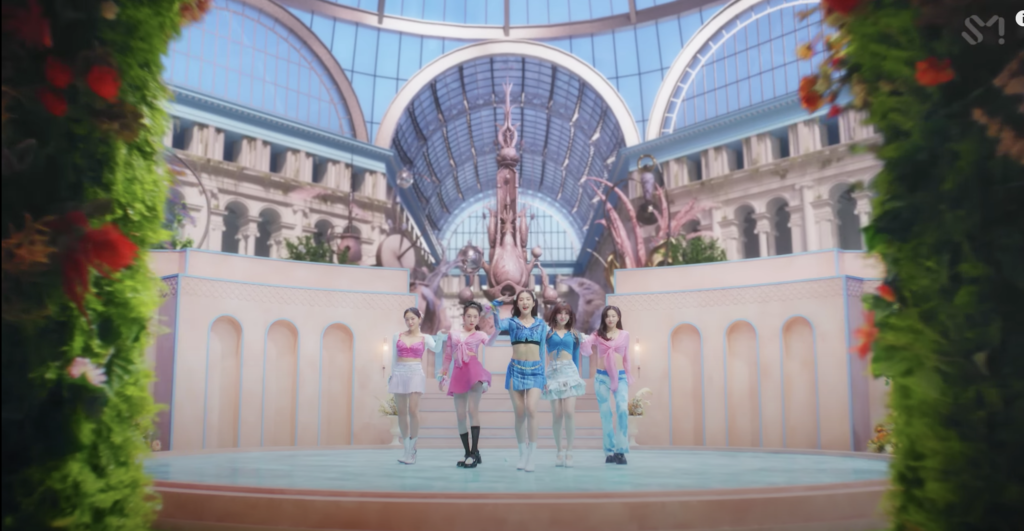
What did our readers think of Red Velvet’s latest comeback? Did you like their new comeback and title track, or think it pales in comparison to previous tracks? Feel free to leave any and all comments down below!
(Art in Context [1] [2]; Joy of Museums, Smart History; Tate; YouTube; images by SM Entertainment)
